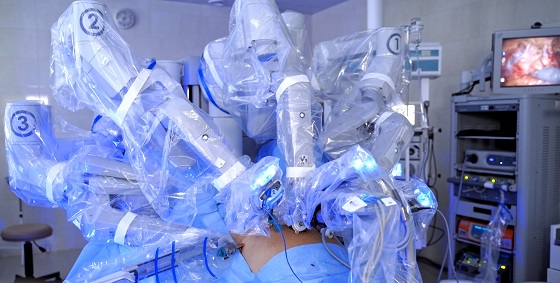RSIP Vision, provider of medical imaging through Artificial Intelligence (AI) and computer vision solutions, has announced a new supporting technology for intraoperative video analysis. This technology provides real-time anatomical measurements in surgical videos, supporting a variety of clinical use cases, such as bariatric surgery, small bowel resection, and more.
With this new technology, a surgeon will be able to accurately measure tissue’s physical dimensions by indicating points on top of the tissue, using the surgical tools, rather than eyeballing the distance as approximation being done today, or using a cumbersome intraoperative ruler.
“In trauma and acute care surgery cases, such as bowel obstruction, ischemia and severe inflammation, bowel resection is often needed,” said Dr. David Hochstein, Trauma and Acute Care Surgeon at Rambam Hospital, Haifa, Israel. “We must consider the balance between removing enough of the ischemic or severely inflamed intestine without risking short-bowel syndrome. Having an accurate and easy way to perform measurements within the image during the procedure will significantly increase our confidence and speed up the surgery.”
Medical robot manufacturers
RSIP Vision’s new vendor-neutral technology will be available to third-party endoscopic imaging systems and medical robot manufacturers, allowing a more accurate and efficient way to perform surgical procedures by providing precise intraoperative measurements. For example, in sleeve gastrectomy, where avoiding damage to the pylorus is essential, while maintaining the benefits of the surgery, an accurate measurement of resection distance simplifies the procedure and reduces complications. Performing other procedures, such as Roux-en-Y gastric bypass, biliopancreatic diversion or even Whipple or gastrectomy for oncological purposes, the length of intestine being bypassed is important for avoidance of bile reflux on the one hand and malabsorption on the other hand. This new technology will grant the surgeon the precise length or distance of tissues or spaces.
Algorithm
“Presently, Laparoscopic and Robotic Assisted Surgeries use a real-time video feed for guidance, which is not fully utilized,” said Ron Soferman, CEO at RSIP Vision. “Aside from simply viewing the image, our technology can use the surgical tools in the image as a virtual measurement device. Calibration is performed using a dedicated algorithm which extrapolates the camera parameters. Once the image is calibrated, we can perform accurate measurements within the field-of-view, even in 3D.”
Respectively, most surgical tools are standardized, and their dimensions are well documented. Knowing the dimension of an object in an image allows it to function as a virtual ruler, providing each pixel with a real-world dimension. Leveraging RSIP Vision’s deep learning-based landmark detection technology, the tool tip is automatically tracked, enabling virtual measurements without introduction of a physical ruler into the scene.

